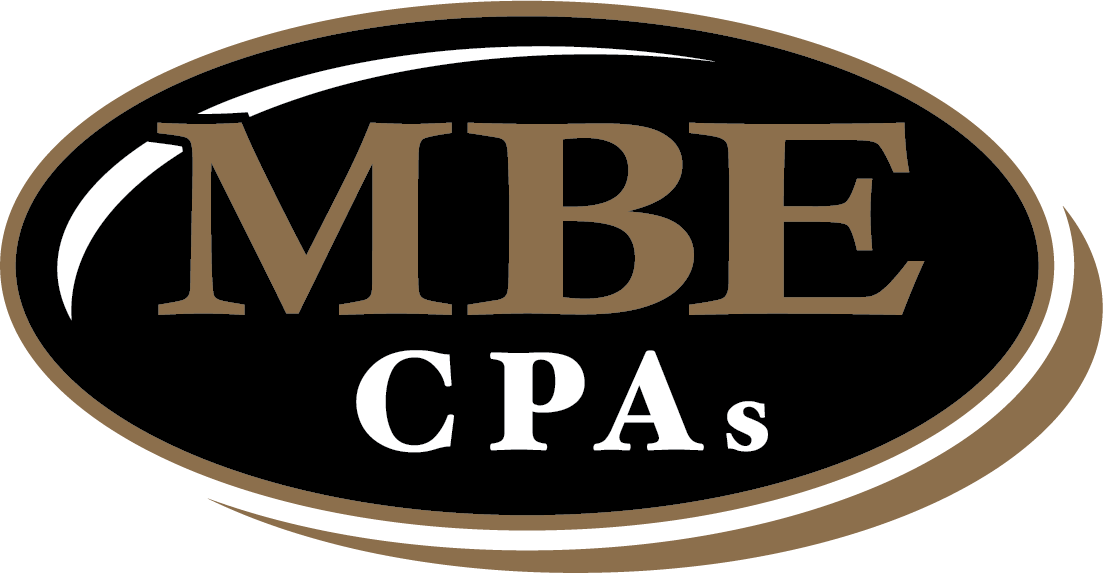Proactive Tax Planning for Overtime Earnings

Sometimes, we need to go the extra mile, putting in extra shifts or hours to achieve our goals. Whether it’s tackling a new project, aiming for a promotion, or simply filling in for a colleague, overtime work has become a common part of our professional lives. At MBE CPAs, we understand better than anyone how easy it is to slip in “the zone” and burn extra hours when working toward an important goal or task.
While the satisfaction of challenging work and the boost to our paychecks are undeniable, it’s crucial to consider how overtime earnings impact our tax liability. It’s a question that often lingers in our minds:
Are we unknowingly putting a dent in our earnings by way of taxes?
It depends. Are you putting in overtime enough to push you into a higher tax bracket for the year?
For instance, the first $11,600 of your taxable income is taxed at 10%. If, after factoring in your overtime earnings, your taxable income reaches $12,800 by the end of the year, you will now be taxed at 12%, having been pushed into a higher tax bracket ($11,601 to $47,150).
Otherwise, your earnings from the extra hours will be treated similarly to your regular wages. They are part of your gross income and are subject to federal income taxes and any applicable state and local taxes. The IRS considers overtime payments “supplemental wages,” subject to specific withholding rules.
Let’s explore strategies and tips to ensure you’re fully aware of your tax obligations when it comes to overtime earnings. By planning proactively and staying informed, we’ll help you keep your hard-earned money in your pocket and avoid any unwelcome surprises come tax season.
New DOL Rule on Overtime Pay Eligibility
If you’re classified as “exempt” under the Fair Labor Standards Act (FLSA), you may think tax planning for overtime pay doesn’t concern you. But that may change starting July this year with the expansion of the overtime pay eligibility.
Shortly after approval, the Biden-Harris administration finalized the new overtime rule. It raises the minimum annual salary threshold determining overtime pay eligibility under the FLSA from $35,568 to $43,888 beginning July 1, 2024, and will increase to $58,656 on Jan. 1, 2025.
If the new rule has unexpectedly made you eligible for overtime, be sure to plan ahead for the tax implications before the new rule starts!
Tax Planning Guide for Overtime Pay
Tracking and Documenting Overtime Earnings

Keep track of the hours worked beyond 40 hours to report and calculate your overtime earnings accurately.
Several tools and methods are available for tracking overtime. Many employers use time-tracking software or systems that automatically calculate overtime hours. For instance, Payroll Solutions’ online timekeeping platform via iSolved provides easy overtime management and automates FLSA compliance.
If your employer doesn’t provide such a system, you can use manual methods like keeping a logbook or using mobile apps specifically designed for tracking work hours.
For documentation required for tax purposes, keep pay stubs, W-2 forms, or any other documents that provide evidence of the overtime hours worked and the corresponding earnings. This documentation will be crucial for accurate reporting and for potential audits by the tax authorities.
Assessing Tax Withholdings for Overtime Earnings
Be sure to review your withholding allowances on your Form W-4. This form determines how much tax is withheld from your paycheck. Assessing your withholding allowances ensures that the appropriate amount of tax is withheld, considering both your regular pay and overtime earnings.
Regarding overtime earnings, it is important to determine the appropriate withholding amount. Overtime pay is often taxed at a higher rate, so it might be necessary to adjust your withholding to account for this higher taxation rate. Adjusting your withholdings can help prevent any underpayment or overpayment of taxes.
Lastly, consider adjusting your withholding for overtime fluctuations. If your overtime earnings are irregular, you can use the IRS’s tax withholding estimator to determine the proper amount to be withheld.
Maximizing Deductions for Overtime Earnings
Identifying tax-deductible expenses related to overtime work can help you maximize your deductions and reduce your taxable income. Some common tax-deductible expenses related to overtime work include job-related travel expenses, work-related education expenses, and professional dues or memberships.
To maximize your deductions, keep detailed records and receipts of these expenses. Proper documentation is crucial when claiming deductions, as it provides evidence of the costs incurred.
Retirement Planning for Overtime Earners
Retirement savings are crucial for long-term financial stability, so allocate a portion of your earnings towards retirement. Tax-advantaged retirement accounts, such as a 401(k) or an Individual Retirement Account (IRA), provide tax benefits and help maximize retirement contributions.
With overtime earnings, exploring strategies to maximize retirement contributions is essential. By contributing a higher percentage of your overtime earnings to your retirement account, you can take advantage of the tax benefits and boost your retirement savings potential.
MBE Wealth can help you uncover additional strategies to maximize your retirement funds and generate tax savings.
Planning for Self-Employed Overtime Earnings
If you’re self-employed or do freelance work, there are additional considerations in tax planning. Self-employment taxes, including the employer and employee portion of Social Security and Medicare taxes, must be taken into account.
Understanding self-employment taxes, deductions, and credits is crucial for managing taxes on self-employed overtime earnings. Keeping track of business-related expenses, such as equipment, office supplies, and marketing, can help reduce your taxable self-employment income.
Staying Informed and Adapting to Tax Law Changes
We can’t overstate this enough: Tax is a tricky business, with inflation-adjusted tax rates, changing legislation, and evolving rules and guidelines to contend with regularly. Therefore, it’s crucial to take a proactive approach to staying informed.
One accessible resource for staying abreast of tax law changes is the Internal Revenue Service (IRS) website. The IRS regularly publishes updates, news releases, tax forms, and instructions highlighting tax law changes and the latest developments.
However, with busy schedules, we may not always remember or find time to visit the IRS website regularly. In such cases, the MBE CPAs app comes in handy. It has a customizable news feed that filters topics and industries based on your preferences. This feature ensures you receive relevant content updating you on the latest tax law changes. The app also has a push notification feature that alerts you when new tax law changes are published.
Work with a Tax Professional for Proactive Tax Planning

Many other platforms like ours are rich with resources that can help you navigate tax planning. Still, nothing beats having a trusted professional who can help you understand the complexities of tax laws and how they can affect your overtime earnings. They can analyze your financial situation and help you make informed decisions about your tax planning strategies.
A tax professional can also pinpoint potential tax-saving opportunities that may not be within your awareness and assist you in steering clear of costly errors. Moreover, they can assist with tax compliance, including the accurate and timely filing of your tax returns.
Consider partnering with MBE CPAs to achieve your tax planning goals and optimize overtime earnings!
